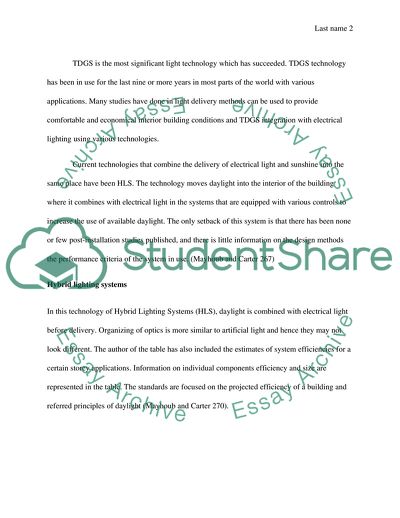Cite this document
(Concentrating Sunlight with Fiber Optics AKA Hybrid Solar Lighting Coursework Example | Topics and Well Written Essays - 3500 words - 1, n.d.)
Concentrating Sunlight with Fiber Optics AKA Hybrid Solar Lighting Coursework Example | Topics and Well Written Essays - 3500 words - 1. https://studentshare.org/engineering-and-construction/1832376-concentrating-sunlight-with-fiber-optics-aka-hybrid-solar-lighting
Concentrating Sunlight with Fiber Optics AKA Hybrid Solar Lighting Coursework Example | Topics and Well Written Essays - 3500 words - 1. https://studentshare.org/engineering-and-construction/1832376-concentrating-sunlight-with-fiber-optics-aka-hybrid-solar-lighting
(Concentrating Sunlight With Fiber Optics AKA Hybrid Solar Lighting Coursework Example | Topics and Well Written Essays - 3500 Words - 1)
Concentrating Sunlight With Fiber Optics AKA Hybrid Solar Lighting Coursework Example | Topics and Well Written Essays - 3500 Words - 1. https://studentshare.org/engineering-and-construction/1832376-concentrating-sunlight-with-fiber-optics-aka-hybrid-solar-lighting.
Concentrating Sunlight With Fiber Optics AKA Hybrid Solar Lighting Coursework Example | Topics and Well Written Essays - 3500 Words - 1. https://studentshare.org/engineering-and-construction/1832376-concentrating-sunlight-with-fiber-optics-aka-hybrid-solar-lighting.
“Concentrating Sunlight With Fiber Optics AKA Hybrid Solar Lighting Coursework Example | Topics and Well Written Essays - 3500 Words - 1”. https://studentshare.org/engineering-and-construction/1832376-concentrating-sunlight-with-fiber-optics-aka-hybrid-solar-lighting.


